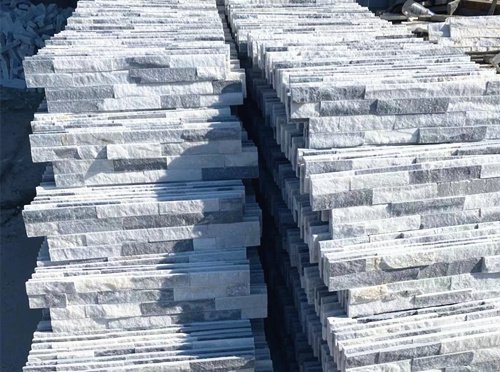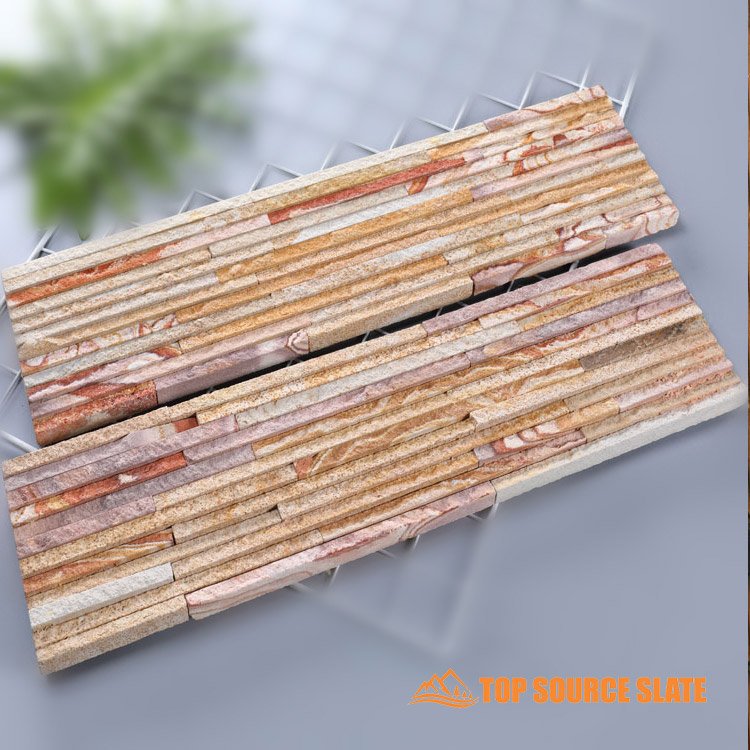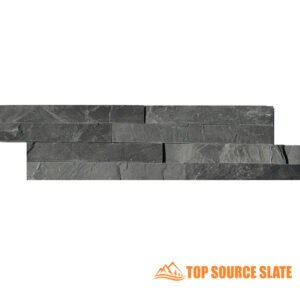Introduction
The Timeless Appeal of Natural Stacked Stone
Natural stacked stone panels exude an enduring charm that transcends fleeting design trends. The rugged beauty of stone has been revered for centuries, offering a sense of permanence and connection to the earth. Whether adorning a cozy fireplace or an expansive exterior wall, these panels imbue spaces with a distinctive character that is both elegant and rustic.
The Versatility of Stone Panels in Home Design
One of the most compelling aspects of natural stacked stone panels is their versatility. They seamlessly blend into various design styles, from modern minimalism to traditional rustic. Stone panels can serve as a dramatic focal point or a subtle accent, enhancing the aesthetic of any room or outdoor space.
Understanding Natural Stacked Stone Panels
Definition and Characteristics
Natural stacked stone panels are composed of individual pieces of stone meticulously arranged and affixed to a backing. Each panel is designed to interlock seamlessly with others, creating a cohesive and striking stone wall. The inherent variations in color, texture, and pattern make each installation unique.
Types of Natural Stones Used
Various types of natural stones are employed in the creation of stacked stone panels. Common choices include slate, quartzite, sandstone, and limestone. Each type of stone offers its own unique set of characteristics, from the vibrant hues of quartzite to the soft, earthy tones of limestone.


Benefits of Natural Stacked Stone Panels
Aesthetic Value
The aesthetic appeal of natural stacked stone panels is unparalleled. The intricate textures and rich colors of natural stone create a visually captivating effect that enhances the ambiance of any space. Whether used in a modern or traditional setting, stone panels add a layer of sophistication and depth.
Durability and Strength
Natural stone is renowned for its durability and strength. It withstands the elements, resists wear and tear, and maintains its beauty over time. This makes natural stacked stone panels an excellent choice for both interior and exterior applications, providing lasting value and performance.
Eco-friendly Attributes
Choosing natural stone is an environmentally responsible decision. Unlike manufactured materials, natural stone is a sustainable resource that requires minimal processing. Its longevity reduces the need for frequent replacements, contributing to a reduction in overall environmental impact.
Factors to Consider Before Choosing
Location: Interior vs. Exterior
The intended location of the stone panels is a crucial consideration. While most natural stones are suitable for both interior and exterior use, some may perform better in certain environments. For instance, sandstone, with its porous nature, may be more suited for indoor applications unless properly sealed.
Climate and Weather Conditions
Climate plays a significant role in the selection of natural stone panels. Stones that thrive in dry, temperate climates might not be suitable for regions with extreme weather conditions. It’s essential to choose a stone type that can endure the local climate without compromising its integrity.
Budget and Cost Considerations
The cost of natural stacked stone panels can vary widely based on the type of stone and the complexity of the installation. While natural stone may have a higher upfront cost compared to manufactured alternatives, its durability and timeless appeal often justify the investment. Budgeting for both the material and installation costs is crucial.
Varieties of Natural Stacked Stone Panels
Slate Panels
Slate panels are known for their striking color variations and fine grain. They offer a sleek, modern look and are highly resistant to water and temperature fluctuations, making them ideal for both indoor and outdoor use.


Quartzite Panels
Quartzite panels are celebrated for their hardness and resistance to abrasion. They come in a range of colors, from subtle whites and grays to vibrant blues and greens. Quartzite’s durability makes it a perfect choice for high-traffic areas.


Sandstone Panels
Sandstone panels exude a warm, earthy charm with their range of soft colors and natural textures. While they are less dense than other stones, proper sealing can enhance their durability, making them suitable for various applications.


Limestone Panels
Limestone panels offer a classic, timeless look with their soft, muted tones and smooth texture. They are versatile and can be used in both contemporary and traditional designs. However, limestone is more porous and may require sealing for certain applications.


Choosing the Right Style and Color
Complementing Your Home’s Architecture
When selecting natural stacked stone panels, it’s essential to consider the architectural style of your home. The panels should harmonize with the overall design, whether it’s a sleek modern look or a rustic country charm. The right choice will enhance the cohesiveness of your home’s aesthetic.
Color Variations and Their Impact
Natural stone comes in a wide array of colors, each bringing its own unique energy to a space. Lighter tones can make a room feel larger and more open, while darker shades add a sense of intimacy and warmth. Understanding the impact of color variations is key to achieving the desired ambiance.
Texture and Finish: Smooth vs. Rough
The texture and finish of the stone panels significantly influence their overall appearance. Smooth finishes lend a polished, contemporary feel, while rough textures add a rustic, organic touch. Consider the effect you wish to achieve and choose accordingly.
-
 Oyster quartz split face mosaic tiles 360x100mm
Oyster quartz split face mosaic tiles 360x100mm -
 Sparkle ice white split face mosaic tiles
Sparkle ice white split face mosaic tiles -
 Sparkle ice grey split face mosaic tiles
Sparkle ice grey split face mosaic tiles -
 Split face tiles black slate cladding 360x100mm
Split face tiles black slate cladding 360x100mm -
 Split face multi color rusty slate natural stone cladding
Split face multi color rusty slate natural stone cladding -
 Wholesale splitface bronze sparkle quartz feature wall tiles
Wholesale splitface bronze sparkle quartz feature wall tiles -
 China manufacturer quartzite cream split face tile 10x36cm
China manufacturer quartzite cream split face tile 10x36cm -
 China manufacturer black quartzite mini splitface tile
China manufacturer black quartzite mini splitface tile -
 China factory green quartzite split face mosaic wall tiles
China factory green quartzite split face mosaic wall tiles
Installation Insights
Professional Installation vs. DIY Projects
The decision between professional installation and a DIY approach depends on your skill level and the project’s complexity. Professional installation ensures precision and quality, while DIY can be more cost-effective and personally rewarding. Weigh the pros and cons carefully.
Preparation and Surface Requirements
Proper preparation is vital for a successful installation. Ensure the surface is clean, dry, and structurally sound. Accurate measurements and a well-thought-out layout plan are essential to avoid mistakes and ensure a seamless installation.
Essential Tools and Materials
Having the right tools and materials on hand is crucial. Essential tools include a wet saw, level, trowel, and adhesive. Investing in quality materials and tools will make the installation process smoother and result in a professional-looking finish.
Natural stone cladding: The Complete Guide
Stacked Stone: A Complete Buyer’s Guide
How to Install Stacked Stone or Ledge Stone
Maintenance and Care Tips
Regular Cleaning Practices
Maintaining the beauty of natural stacked stone panels requires regular cleaning. Use a soft brush or cloth to remove dust and debris. For more thorough cleaning, a mixture of mild detergent and water can be used. Avoid abrasive cleaners that could damage the stone.
Preventing and Addressing Stains
Natural stone can be prone to staining, so it’s important to address spills promptly. Using a sealant can help prevent stains from penetrating the stone. For existing stains, a poultice made of baking soda and water can be effective.
Seasonal Maintenance
Seasonal changes can affect the condition of your stone panels, especially in outdoor installations. Regularly inspect the panels for signs of wear or damage, and perform any necessary maintenance to keep them looking their best throughout the year.
FAQ
Is stacked stone still in style?
Yes, stacked stone remains in style. It’s popular for its natural, textured look and is used in various interior and exterior applications, from fireplaces and accent walls to exterior facades. Its timeless appeal and versatility keep it relevant in contemporary and traditional design.
What is the difference between stacked stone and Ledgestone?
Stacked Stone:
- Appearance: Stacked stone typically features a more uniform, linear arrangement of stones, giving a neat and orderly look.
- Installation: It often comes in modular panels, making it easier to install and creating a seamless, interlocking appearance.
- Usage: Commonly used for modern and minimalist designs due to its clean lines.
Ledgestone:
- Appearance: Ledgestone has a more rugged and natural appearance with irregular shapes and sizes of stones, providing a rustic, textured look.
- Installation: It can be installed as individual pieces or panels, but the individual pieces require more time and effort to fit together.
- Usage: Often used in rustic or traditional designs to create a more organic, natural feel.
What are the pros and cons of stacked stone?
Pros:
- Aesthetic Appeal: Provides a natural, textured look that enhances the visual interest of any space.
- Versatility: Suitable for both interior and exterior applications.
- Durability: Strong and long-lasting, especially when properly installed and maintained.
- Easy Installation: Modular panels make installation relatively straightforward.
- Low Maintenance: Requires minimal upkeep once installed.
Cons:
- Cost: Can be expensive, both in terms of materials and installation.
- Weight: Heavy, which might require additional structural support.
- Complex Installation: While modular panels are easier to install, individual stones can be labor-intensive and time-consuming.
- Potential for Damage: Improper installation can lead to issues such as water infiltration and damage over time.
- Limited Flexibility: Difficult to cut and shape for intricate designs or around tight corners.
Is ledger stone out of style?
Ledger stone is not out of style. Like stacked stone, ledger stone’s natural, rustic appearance continues to be popular, especially in designs that aim for a more organic or traditional look. It is used in both residential and commercial spaces for fireplaces, feature walls, and exterior facades.
Can I install stacked stone over drywall?
Installing stacked stone directly over drywall is not recommended, especially for heavier stone veneers. Drywall may not provide adequate support. Instead, it’s better to install a cement backer board over the drywall to provide the necessary support and ensure a more secure installation.
Do you need to seal an interior ledger stone?
Sealing interior ledger stone is recommended to protect it from stains, dirt, and moisture. Sealing helps maintain the stone’s appearance and longevity. The frequency of sealing depends on the type of stone and the amount of wear and tear it experiences.
Are stone fireplaces coming back into fashion?
Yes, stone fireplaces are making a comeback. They offer a timeless, cozy, and natural look that complements various interior styles, from rustic to modern. Stone fireplaces can serve as a stunning focal point in living rooms and other spaces, contributing to their renewed popularity.
By considering these factors and following these guidelines, you can choose the perfect natural stacked stone panels to enhance the beauty and functionality of your home.
As a natural stacked stone panels manufacturer, factory, and supplier, we export these stone panels in many containers every year. Our highly trained staff has been providing excellent service and helping customers choose the most popular stacked stone panels with high quality for your market according to our experience.
We have more than 15 years of export experience and offer samples before order placement. To get a customized quote, Contact Us Now!


